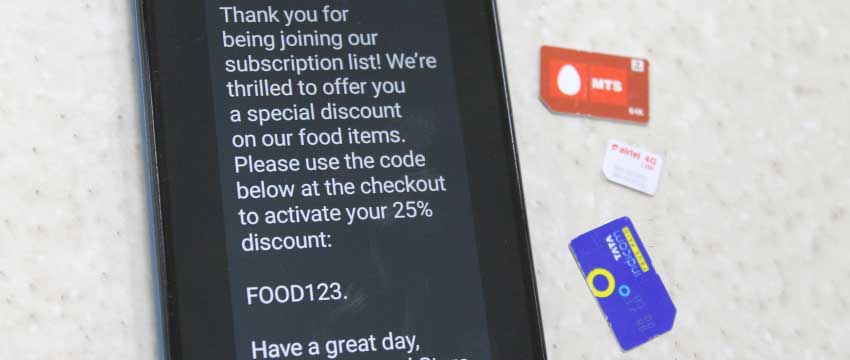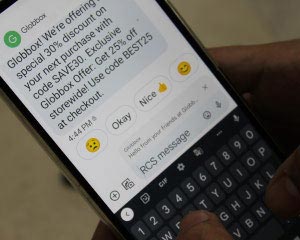Integrate Bulk SMS Into Existing Marketing Or Customer Communication Strategy
In this article, we'll take a look at some of the ways that you can integrate bulk SMS into your existing strategy.
-
Identify your goals and
objectives
The first step in integrating bulk SMS into your strategy is to identify your goals and objectives. What do you want to achieve with your SMS campaigns? Do you want to increase sales. By identifying your goals and objectives, you can tailor your SMS campaigns to achieve the desired outcomes.
-
Segment your audience
Segmenting your audience can help you to tailor your SMS campaigns to specific groups of customers. This can include factors such as demographics, behavior, interests, and preferences. By segmenting your audience, you can send targeted messages that are more likely to resonate with each group.
-
Create compelling content
Creating compelling content is essential for engaging your audience and driving action. This can include using attention-grabbing headlines, clear calls-to-action, and personalization. By creating compelling content, you can increase the likelihood that your messages will be read and acted upon.
-
SMS conjunction with
other channels
Integrating SMS into your existing communication channels, such as email or social media, can help to amplify your message and increase engagement. For example, you can use SMS to promote a social media campaign or to follow up with customers who have shown interest in your products or services via email.
-
Automate your campaigns
Automating your SMS campaigns can help to save time and resources, while also ensuring that messages are sent at the optimal time for each recipient. This can include setting up triggered messages based on specific actions or events, such as abandoned carts or birthdays.
-
Monitor and optimize your
campaigns
Regularly monitoring and optimizing your SMS campaigns is essential for ensuring that they are effective and achieving your desired outcomes. This can include tracking response rates, opt-out rates as well as making adjustments to message content, based on results.
-
Ensure compliance with
legal-regulatory
Ensuring compliance with legal and regulatory requirements is essential for protecting your customers' privacy and avoiding penalties. This includes obtaining consent from recipients, complying with anti-spam laws, accurate sender information, and ensuring data protection and privacy.
-
Use a reliable SMS service
provider
Using a reliable SMS service provider is essential for ensuring that your messages are delivered in a timely and reliable manner. Look for providers with a proven track record of delivering high-quality SMS services and compliance with industry standards and regulations.
In summary, integrating bulk SMS into your existing marketing or customer communication strategy requires identifying your goals and objectives, segmenting your audience, creating compelling content, using SMS in conjunction with other channels, automating your campaigns, monitoring and optimizing your campaigns, ensuring compliance with legal and regulatory requirements, and using a reliable SMS service provider. By following these steps, you can effectively integrate bulk SMS into your strategy and achieve your desired outcomes.
Costs Associated With Sending Bulk Sms Messages
In this answer, we will discuss the various costs associated with sending bulk SMS messages and how to optimize your costs while still achieving your business objectives.
❖ Volume of Messages : The more messages you plan to send, the more it will cost. Most bulk SMS service providers charge on a per-message basis, and prices usually decrease as the volume of messages increases. If you plan to send a large number of messages, you may be able to negotiate a lower price per message with your service provider. Additionally, some providers offer discounts or promotions for high-volume users.
❖ Destination of Messages : The cost of sending bulk SMS messages can also vary based on the destination of the messages. Different countries and regions have different mobile carrier rates and regulations, which can affect the cost of sending messages to those destinations. For example, sending a message to a mobile phone in the United States may cost more than sending a message to a phone in India. Make sure to check with your provider about the pricing and regulations for different destinations before sending messages.
❖ Type of Bulk SMS Service : There are various types of bulk SMS services available, and the costs associated with each can differ. For example, some providers offer self-service platforms where you can manage your campaigns, while others offer fully-managed services where they handle everything from message creation to delivery. The latter option tends to be more expensive, but can be useful for businesses that do not have the resources or expertise to manage their own campaigns. Additionally, some providers may charge additional fees for features such as personalization, reporting, or analytics.
❖ Miscellaneous Costs : There may be other costs associated with sending bulk SMS messages, such as setup fees, maintenance fees, or fees for API integration. Make sure to ask your provider about any additional costs so you can budget accordingly.
To optimize your costs when sending bulk SMS messages, consider the following tips:
-
Choose a provider that offers competitive pricing based on the volume of messages you plan to send. Negotiate pricing if necessary.
-
Select a provider that offers competitive rates for the destinations you plan to send messages to. Avoid providers that charge excessive fees for certain regions or countries.
-
Opt for a self-service platform if you have the resources and expertise to manage your own campaigns. This can be a cost-effective way to send messages.
-
Take advantage of any discounts or promotions offered by your provider.
-
Monitor and optimize your campaigns regularly to avoid wasting resources on ineffective messages.
-
Avoid unnecessary features that may increase costs, such as personalization or advanced reporting.
In conclusion, the costs associated with sending bulk SMS messages depend on various factors, including volume, destination, and type of service. By choosing a reliable provider, negotiating pricing, and optimizing your campaigns, you can keep costs low while still achieving your business objectives.
Download and Install Bulk SMS Messages Software
Difference Between Promotional And Transactional SMS Messages
SMS marketing has become an essential tool for businesses to connect with their customers and promote their products and services. However, there are different types of SMS messages that businesses can use, each with its own unique features and purposes. The two main types of SMS messages are promotional and transactional SMS messages. In this essay, we will discuss the differences between these two types of SMS messages, their benefits, and how businesses can use them to enhance their marketing efforts.

One of the most common uses of DataMatrix barcodes is to encode product information, such as product names, descriptions, and prices. This information can then be used by retailers and distributors to track inventory, manage pricing, and facilitate transactions.
One of the primary benefits of promotional SMS messages is that they can be sent to a large group of people at once, making them a highly efficient and cost-effective marketing tool. They can also be customized to include personalized information, such as the customer's name, location, or past purchase history. This can help to create a more engaging and relevant message that resonates with the customer and encourages them to take action.
However, there are some regulations and best practices that businesses need to follow when sending promotional SMS messages. For example, businesses must obtain consent from customers before sending marketing messages and include an opt-out option in each message. Additionally, promotional SMS messages should not be sent too frequently, as this can be seen as spammy and may lead to customers unsubscribing from the service.
Transactional SMS messages are sent to customers to provide them with important and relevant information related to their transactions or interactions with the business. These messages are typically automated and triggered by a specific action, such as a purchase, a booking, or a request for information. Examples of transactional SMS messages include order confirmations, shipping updates, appointment reminders, and password resets.
One of the primary benefits of transactional SMS messages is that they provide customers with real-time updates and information that can help them stay informed and engaged with the business. This can improve customer satisfaction and loyalty and help to build trust and credibility with the customer. Additionally, transactional SMS messages are exempt from certain regulations that apply to promotional SMS messages, such as the requirement to obtain consent from customers before sending messages.
However, it is important to note that transactional SMS messages should not be used for marketing or promotional purposes. This can lead to confusion and frustration among customers and may ultimately harm the relationship between the customer and the business. Additionally, businesses must ensure that the content of their transactional SMS messages is accurate and relevant, as any mistakes or errors can damage the customer's trust in the business.
In conclusion, there are significant differences between promotional and transactional SMS messages, and each has its own unique benefits and limitations. Promotional SMS messages can be a highly effective marketing tool for businesses, but they must be sent in accordance with regulatory requirements and best practices. Transactional SMS messages, on the other hand, provide customers with important and relevant information related to their interactions with the business and can help to build trust and credibility. By understanding the differences between these two types of SMS messages, businesses can use them effectively to enhance their marketing efforts and improve their relationships with their customers.

